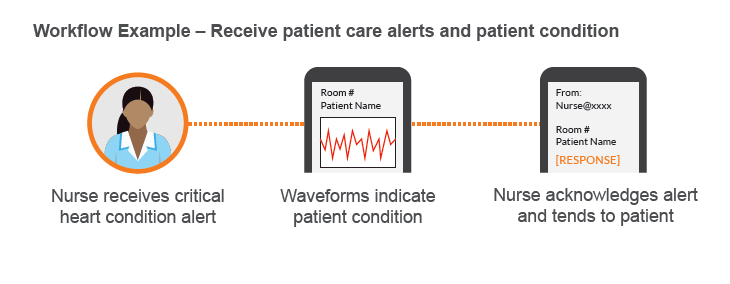Alarm Fatigue: An Antidote


Alarm fatigue is more than just a nuisance in hospitals; it can put patients and clinicians at significant risk.
Healthcare workers are inundated with alarms and alerts throughout their shifts, but many alerts don’t actually require their attention. That’s because healthcare communication systems tend to push every alarm through to staff without distinguishing between high and low priorities.
Since nurses and doctors need to spend time and energy prioritizing their responses, this impedes their ability to take care of patients and often causes them to ignore true emergencies. Recent studies have revealed some alarming data:
- 85% of critical care staff say nuisance alarms occur frequently
- Nearly 9 out of 10 nurses say nuisance alarms disrupt patient care
When clinicians blindly respond to an overwhelming amount of false or low-level alerts, this creates alarm fatigue that can lead to serious burnout. Beyond being a drag on staff, the resulting delays and missed alarms can be extremely dangerous for patients.
Take care of your clinical staff so they can take care of patients
Studies show a 30% reduction in alarms can be made without impacting patient safety. The most effective way to accomplish this is with alarm filtering.
Spectralink’s alarm filtering system works in 4 key ways:
1. Providing patient information to accelerate decision-making
Nurses walk up to five miles around hospitals per shift. Spectralink’s alarm notification system provides doctors and nurses with virtual access to information they would have otherwise had to obtain by walking to the patient’s room. This technology enables faster, more informed decision-making and spares staff time and energy.

2. Enabling automatic escalation based on patients and events
In combination with detailed patient information, Spectralink’s interactive messaging enables staff to coordinate responses to alerts quickly. Systems can also be configured to automatically escalate alarm notifications based on the patient’s vitals.
3. Combining alarms in a single alert
Spectralink solutions integrate with mobile applications that connect patient monitors, pumps, nurse calls and other systems. As a result, one event that might otherwise trigger alarms on multiple systems now produces one comprehensive and detailed alert.
4. Time-delaying low-level alerts that often result in false alarms
Just as high-priority alerts can be configured to trigger automatic escalation, low-level alerts can be automatically de-escalated and false alarms deactivated.
Fill out the form below to request more information about how Spectralink’s mobile solutions can alleviate alarm fatigue and improve patient care in your facility.
Contact Us
I agree to the Privacy Policy.
